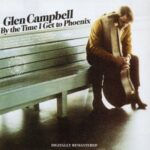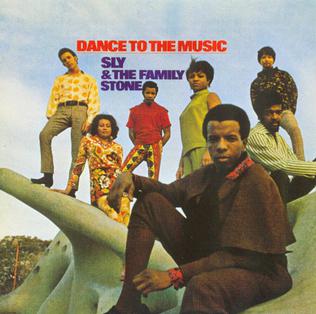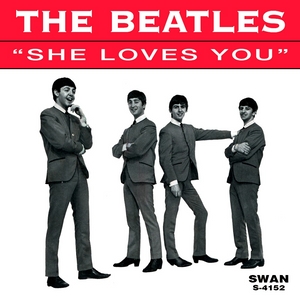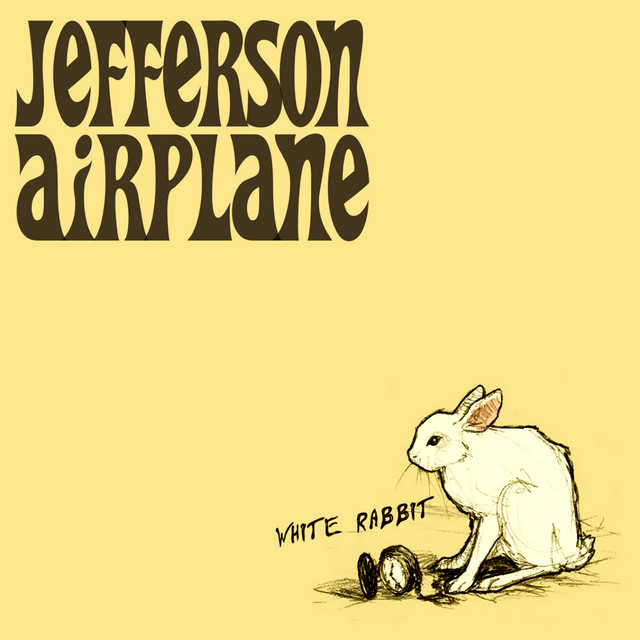 There are songs that capture fleeting moments, tied forever to the year of their release. Then there are songs that transcend decades, capable of speaking across generations, their core emotions unchanging even as the world shifts. Glen Campbell’s “By the Time I Get to Phoenix” belongs squarely in the latter category. Released in 1967, this Jimmy Webb-penned ballad became one of Campbell’s defining recordings, a landmark in both his career and in the broader history of country-pop crossover music. It was more than a single—it was a narrative of heartbreak, longing, and departure, delivered with such understated power that it continues to resonate with listeners nearly six decades later.
There are songs that capture fleeting moments, tied forever to the year of their release. Then there are songs that transcend decades, capable of speaking across generations, their core emotions unchanging even as the world shifts. Glen Campbell’s “By the Time I Get to Phoenix” belongs squarely in the latter category. Released in 1967, this Jimmy Webb-penned ballad became one of Campbell’s defining recordings, a landmark in both his career and in the broader history of country-pop crossover music. It was more than a single—it was a narrative of heartbreak, longing, and departure, delivered with such understated power that it continues to resonate with listeners nearly six decades later.
This article will explore the story of the song, from Jimmy Webb’s inspiration to Campbell’s unforgettable performance, the cultural context that allowed it to flourish, and its lasting impact on music. Along the way, we’ll dig into why “By the Time I Get to Phoenix” remains a touchstone for anyone seeking to understand the alchemy of great songwriting paired with the perfect artist.
The Songwriter: Jimmy Webb’s Poetic Touch
Before Glen Campbell ever laid his smooth baritone over the chords of “By the Time I Get to Phoenix,” it existed as an idea in the mind of Jimmy Webb, one of the most gifted songwriters of his generation. Webb, a native of Oklahoma who moved to California in the mid-1960s, had already demonstrated a rare knack for pairing evocative lyrics with inventive, sophisticated melodies.
Webb wrote “By the Time I Get to Phoenix” in 1965, reportedly inspired by his breakup with Susan Horton, a woman who left him for another man. That personal pain fueled a series of songs that Webb would pen over the years—among them “MacArthur Park” and “Worst That Could Happen.” But “By the Time I Get to Phoenix” stands apart in its simplicity. It is not an ornate, metaphoric piece but rather a journey told through time and distance.
The genius of Webb’s writing lies in its structure. The song traces a man’s departure from his lover not through dramatic confrontation, but through a calm, resigned itinerary. He imagines what his partner is doing at each stage of his journey:
-
By the time he gets to Phoenix, she’ll be rising.
-
By the time he gets to Albuquerque, she’ll be working.
-
By the time he reaches Oklahoma, she’ll be sleeping.
Each verse moves forward both geographically and emotionally, underscoring the inevitability of his leaving and the indifference he expects to meet. Webb himself once described the song as “a geographical metaphor for the end of a relationship.” That metaphor turned out to be universally relatable.
Glen Campbell: The Perfect Voice for a Poetic Song
When Glen Campbell recorded “By the Time I Get to Phoenix” in 1967, he was not yet the household name he would become. He had been working steadily as a session musician in Los Angeles, part of the famed “Wrecking Crew” that backed everyone from the Beach Boys to Frank Sinatra. Campbell’s guitar skills were second to none, but he was hungry to establish himself as a singer and solo performer.
He had already scored a modest hit with “Burning Bridges” in 1967 and had caught attention with his recording of “Gentle on My Mind.” But it was “By the Time I Get to Phoenix” that elevated him to the next level.
Campbell’s rendition is restrained yet deeply emotive. His voice conveys a mixture of tenderness and resignation, never lapsing into melodrama. Where another singer might have leaned into the bitterness of the lyric, Campbell’s interpretation suggests quiet heartbreak, the pain of a man who has accepted the futility of trying to make his partner understand.
The arrangement, with its lush strings and subtle orchestration, perfectly straddled the line between country and pop. This was not honky-tonk heartbreak music—it was sophisticated, polished, and accessible to mainstream audiences. In essence, it was one of the early hallmarks of the countrypolitan sound, paving the way for country music’s wider crossover appeal.
Chart Success and Recognition
Upon its release in October 1967, “By the Time I Get to Phoenix” quickly climbed the charts. It reached No. 2 on the Billboard Country Singles chart, No. 26 on the Billboard Hot 100, and No. 12 on the Adult Contemporary chart. While it wasn’t a chart-topping smash in the conventional sense, its impact was far more enduring.
The song earned Campbell the Grammy Award for Best Vocal Performance, Male in 1968. In fact, that same year, he also won Best Country & Western Recording for “Gentle on My Mind,” cementing his status as both a country and pop star. The industry was paying attention to Campbell as someone who could bridge genres, and “By the Time I Get to Phoenix” was a crucial part of that identity.
The Recording Academy would later honor the song in 2004 by placing it in the Grammy Hall of Fame, a recognition reserved for works of lasting qualitative or historical significance.
A Landmark in Country-Pop Crossover
To fully understand why “By the Time I Get to Phoenix” mattered in 1967, one must consider the musical landscape of the time. Country music was still largely viewed as niche, relegated to regional popularity and dismissed by many urban and pop audiences as unsophisticated. Pop music, meanwhile, was dominated by rock ‘n’ roll, Motown, and the British Invasion.
Campbell’s recording proved that country storytelling could be delivered with a pop sensibility and orchestral polish without losing its heart. The song’s success cracked open doors for other artists to bring country music into the mainstream consciousness. In many ways, Campbell was laying the groundwork for future artists like Kenny Rogers and crossover phenomena like Urban Cowboy in the 1980s.
It wasn’t just crossover appeal, though. The song’s structure—anchored by Webb’s unconventional narrative—was different from the three-chord simplicity of most pop hits. It gave listeners something richer to chew on, appealing to those looking for more poetic songwriting in popular music.
Cover Versions and Cultural Reach
One of the clearest markers of a song’s greatness is how many artists choose to reinterpret it. “By the Time I Get to Phoenix” has been covered extensively across genres, a testament to its universal appeal.
Perhaps the most notable version came from soul legend Isaac Hayes, who recorded a sprawling 19-minute rendition for his landmark 1969 album Hot Buttered Soul. Hayes transformed Webb’s concise ballad into an epic of spoken word, orchestration, and groove, reframing the song in the context of Black soul expression. While Campbell’s version was understated, Hayes’s version was cinematic, and both found their own devoted audiences.
Other artists who have recorded the song include:
-
Frank Sinatra, who included it in his repertoire of American standards.
-
Tony Mottola, who recorded it as an instrumental.
-
Reba McEntire, who revisited it from a woman’s perspective.
-
Glen Campbell himself, who often performed it live throughout his career.
The sheer range of performers drawn to the song—from crooners to country stars to soul icons—illustrates its adaptability and timeless quality.
The Themes: Distance, Time, and Emotional Geography
Why does “By the Time I Get to Phoenix” continue to resonate? The answer lies in its themes. At its core, it is about leaving—not in anger or in haste, but in inevitability. The protagonist has reached the point where staying is no longer possible, and the song’s unfolding journey reflects both physical and emotional distance.
The geographical markers (Phoenix, Albuquerque, Oklahoma) ground the story in real locations, but they also function metaphorically. Each city represents another step away from the relationship, another layer of detachment. By the time he gets to Oklahoma—nearly halfway across the country—his partner will be asleep, utterly unaware of his departure.
It is not just a song about heartbreak; it is a song about invisibility, about the futility of trying to make someone see your worth. That quiet devastation makes it more poignant than if it had been framed in anger.
Listeners hear their own stories in it—whether it’s the pain of leaving, the sorrow of being unappreciated, or the bittersweet recognition of moving on.
Glen Campbell’s Career Catalyst
For Glen Campbell, “By the Time I Get to Phoenix” was a turning point. It not only brought him Grammy recognition but also established him as one of the premier interpreters of Jimmy Webb’s work. Their collaboration would continue with other songs, most famously “Wichita Lineman” in 1968 and “Galveston” in 1969.
Together, Campbell and Webb created a trilogy of sorts—songs that were geographically rooted, emotionally rich, and musically sophisticated. Each one elevated Campbell’s stature and helped shape his public persona as a singer of sensitive, reflective ballads.
Without “By the Time I Get to Phoenix,” it’s unlikely that Campbell would have been catapulted to superstardom with his television variety show, film appearances, and string of hits in the late 1960s and early 1970s. The song marked the moment he stopped being a session player dabbling in singing and became a major recording artist in his own right.
A Song of the American Road
Part of the song’s appeal lies in its uniquely American imagery. The narrative of traveling across the Southwest—from Phoenix to Albuquerque to Oklahoma—evokes the vastness of the country, the loneliness of long stretches of highway, and the bittersweet allure of reinvention through movement.
The road has always been a powerful metaphor in American culture, from Jack Kerouac’s On the Road to countless road movies and songs. Webb’s use of specific place names taps into that mythology, giving the listener a map to trace while also hinting at the emotional geography of departure.
For listeners in the 1960s, many of whom were experiencing unprecedented mobility thanks to the postwar boom in car culture and interstate highways, the imagery would have felt both modern and deeply familiar. For later generations, it carries a nostalgic weight, connecting the song to an era of Americana where leaving town could feel like a kind of freedom.
Lasting Influence and Legacy
More than 50 years after its release, “By the Time I Get to Phoenix” continues to hold a special place in the canon of American popular music. Rolling Stone magazine has ranked it among the greatest songs of all time. It’s taught in songwriting courses as an example of narrative structure and emotional economy.
The song’s influence can also be heard in later artists who embraced narrative songwriting and geographical metaphor—think of Bruce Springsteen’s “Thunder Road” or even contemporary country ballads that trace journeys through time and space.
Glen Campbell himself remained deeply tied to the song. Even in his later years, as he battled Alzheimer’s disease and embarke
d on his poignant “Goodbye Tour,” “By the Time I Get to Phoenix” was a fixture in his setlists. For Campbell, it wasn’t just a hit; it was part of his identity as a performer.
Conclusion: Why It Still Matters
At its heart, “By the Time I Get to Phoenix” is a song about leaving, but more importantly, it is about being unseen. Its protagonist departs quietly, almost gently, resigned to the fact that his absence will barely register. That quiet devastation, paired with Glen Campbell’s tender yet resolute delivery, makes it one of the most haunting breakup songs ever recorded.
Jimmy Webb’s lyrics, grounded in geography and time, elevate the personal into the universal, turning one man’s heartbreak into a timeless journey. Glen Campbell’s voice gave it wings, ensuring that listeners would feel both the sorrow and the strange sense of release that comes with moving on.
e and the longing for recognition are emotions that never age. In Campbell’s hands, “By the Time I Get to Phoenix” became more than a hit single—it became an American classic, forever etched into the cultural landscape like the highways it so vividly evokes.


